By Anita Westervelt, Texas Master Naturalist

Plants are considered native to an eco-region when they’ve gone through the test of time, say a couple hundred years. Master Naturalists advocate planting native species because they withstand a variety of weather, such as February’s brutal freezing temperatures. The Valley’s weather challenges include drought, flood, wind, heat, sun, snow, freeze and salt — sometimes all in the same year.
Native and non-native plants alike looked pretty dismal as the Valley headed into March and then many native plants soon began to rally. Unfortunately, many non-native species didn’t survive leaving gardeners thinking how to rejuvenate their gardens.
When looking for plants to replace those that didn’t survive, consider using native plants that attract butterflies.
Colima, also called lime prickly-ash, Zanthoxylum fagara, weathered the freeze unscathed. It can grow 15 to 30 feet tall; it has a slow growth rate. Small, pale yellow-green flowers March to June; a larval host for giant swallowtail and sicklewing skipper butterflies and Lebeau’s and Forbes’ silk moths. Colima has cat-claw-like sharp prickles.
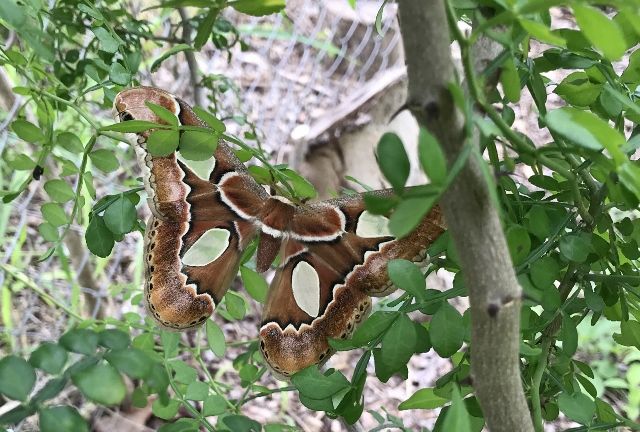
Skeleton leaf golden eye, Viguiera stenoloba, also survived intact. An excellent shrub for nectar, it forms a well-rounded dense mound three feet high; yellow blooms summer to winter.
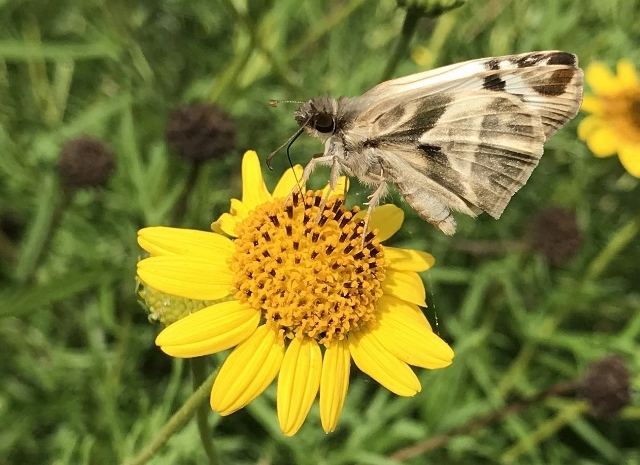
Snapdragon vine, Maurandya antirrhiniflora, has purple and yellow flowers that bloom most of the year; attracts hummingbirds, bees and butterflies; is a host plant to common buckeye butterfly. The leaves retained their bright green color in the freeze and began blooming within days once temperatures began to rise.
What is planted now will have direct correlation on butterfly activity come summer and fall. The following native plants looked like goners for a week or so after the freeze and are now sprouting leaves or new growth from the base. Professional pollinator garden designers promote using plants of varying heights and small, same species in groupings of three, five or seven plants.
Trees; large shrubs:
Mexican caesalpinia, Caesalpinia Mexicana; slow-growing to six to eight feet tall; yellow flowers.
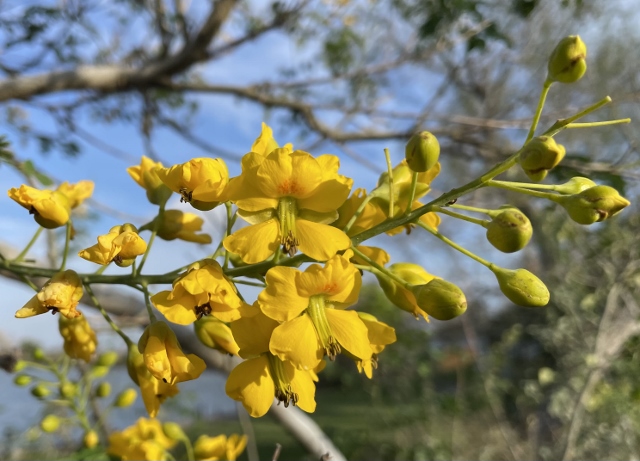
Esperanza, Tecoma stans; large shrub to eight feet with hefty girth; yellow bell-shaped flowers attract butterflies, bees and hummingbirds; larval host to dogface butterflies and plebeian sphinx moth.
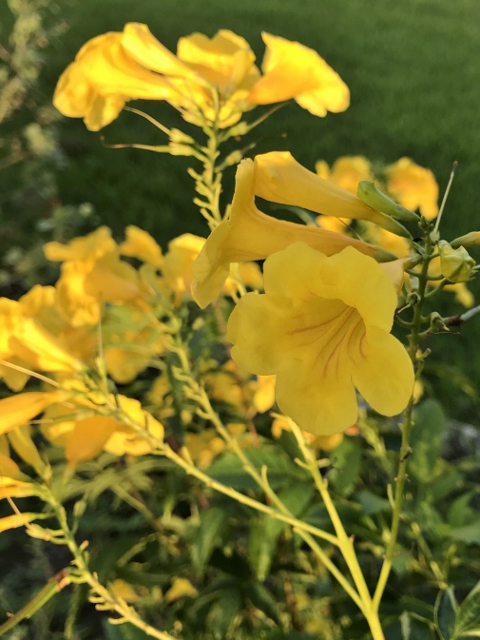
Vasey’s adelia, Adelia vaseyi; host plant to Mexican bluewing butterfly.
Medium to small shrubs
Turk’s cap, Malvaviscus drummondii; red flowers draw butterflies and hummingbirds; grows in shade; host plant for mallow scrub-hairstreak and Turk’s cap white-skipper butterflies.
Crucita, fall-blooming mistflower, Chromolaena odorata; excellent nectar source; lavender flowers late summer to early winter.
Native lantanas: L. urticoides, L. camara, L. velutina; nectar.
Native crotons; several varieties; nectar.
Heliotrope, heliotropium angiospermum, also called scorpion’s tail; white flowers grow at the tips of branches in an arc; attracts small butterflies.
Hairy wedelia, Wedelia acapulcensis [Zexmenia hispida]; low-growing shrub with yellow flowers spiking to 18 inches; larval host to bordered patch butterfly.
Plants:
Frostweed, Verbesina microptera; tall stems with white flower heads; nectar source.
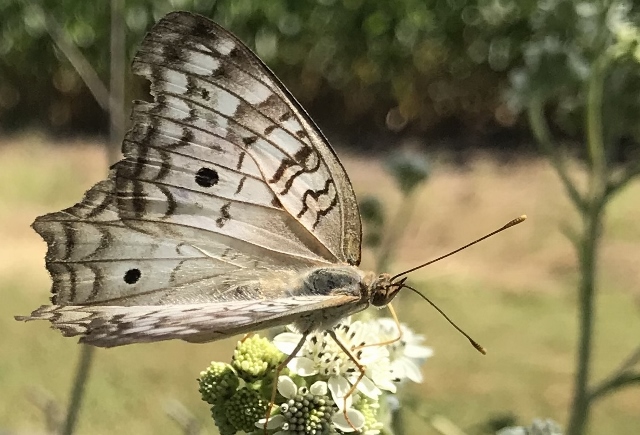
Scarlet sage, Salvia coccinea; crimson spires reach to three feet tall; butterflies and hummingbirds.
Passion vine, Passiflora foetida; flowers attract honey bees; leaves are host to fritillary and heliconian butterflies.
For a list of local native plant growers visit https://rgvctmn.org/rgv-plants/.
– 30 –

Leave a Reply